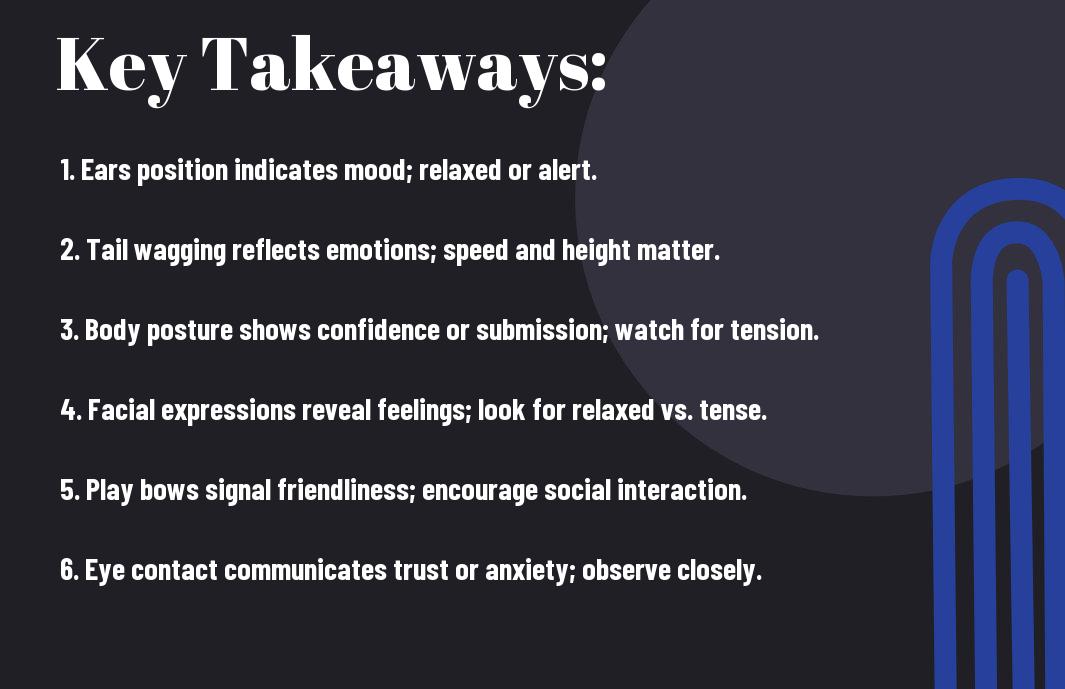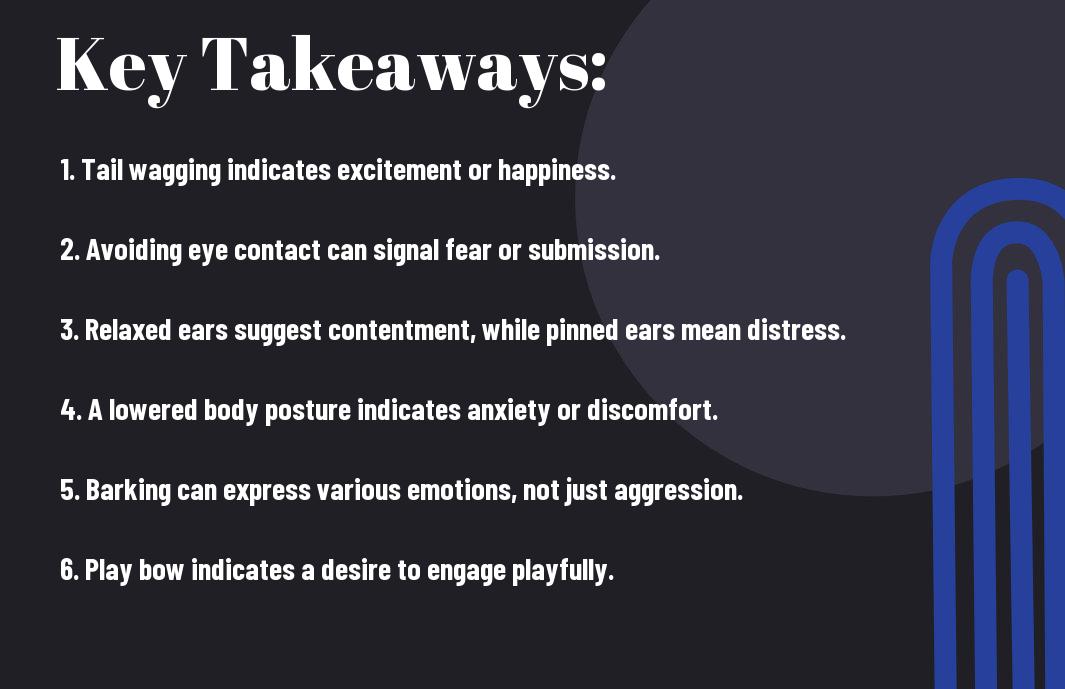Over time, understanding your horse’s body language can significantly enhance your relationship and improve your riding experience. By interpreting their ear positions, tail movements, and overall posture, you can uncover what your horse is feeling, whether it’s excitement, fear, or calmness. This post examines into key signals that reveal your horse’s emotions and intentions, enabling you to respond appropriately to ensure their well-being and your safety.
The Language of Equine Movement
Understanding Gait and Posture
Your horse’s gait and posture provide vital clues about its emotional and physical state. A relaxed horse that walks with a fluid, rhythmic stride is signaling comfort and confidence. Conversely, a stiff, hurried gait may indicate tension or discomfort. Observing the placement of their head and tail can also reveal intentions; a lowered head suggests calmness, while an elevated head may indicate alertness or anxiety.
Interpreting Movement Patterns
Noticing specific movement patterns can deepen your understanding of how your horse feels in various situations. For instance, a horse that abruptly changes direction or speeds up might be expressing fear or discomfort. On the other hand, fluid, smooth transitions often reflect a positive mental state. Analyzing the context of these movements aids in discerning both physical and psychological responses.
Examine how your horse moves in different settings to discern meaningful patterns. For example, a horse that frequently circles you could be demonstrating a playful demeanor or seeking attention. An increase in speed when approaching obstacles may indicate excitement or eagerness. Familiarity with your horse’s unique movement style, coupled with consistent observation, enhances your ability to interpret its feelings and intentions accurately.
Facial Expressions: The Window to a Horse’s Soul
Your horse’s face is a rich tapestry of emotions, revealing insights about their mood and state of mind. From relaxed eyes to tense expressions, these signals provide you with an necessary understanding of your horse’s comfort and wellbeing. Learning to read these facial cues will enhance your bond and improve communication, allowing you to respond to their needs effectively.
The Significance of Ears and Eyes
Your horse’s ears and eyes are pivotal in deciphering their emotions. Ears that are pricked forward indicate curiosity or interest, while flattened ears reveal annoyance or discomfort. Similarly, a soft gaze suggests relaxation, whereas wide eyes may signal fear or alertness. By paying close attention to these signals, you can gauge your horse’s feelings and react accordingly to maintain a calm environment.
Mouth Movements and Their Meanings
Mouth movements in horses convey a range of emotions and reactions. For example, chewing or licking their lips often indicates relaxation and contentment, while clenched jaws can signify stress or anxiety. Understanding these nuances not only helps you assess your horse’s emotional state but also aids in recognizing any discomfort related to equipment, feeding, or handling.

The Importance of Tail Language
Your horse’s tail serves as a significant conveyor of emotion and intent, often revealing insights that other signals might not. Understanding tail language enriches the bond between you and your horse, as their expressions can indicate feelings like excitement, discomfort, or relaxation. Observing tail movements alongside other body language can help you gauge your horse’s overall state, providing valuable context in various situations.
Tail Position and Its Implications
The position of your horse’s tail can dramatically impact the interpretation of their emotions. A highly held tail indicates excitement or alertness, signaling enthusiasm or a readiness to engage. Conversely, a lowered tail often suggests relaxation or submissiveness, while a tucked tail signals fear or discomfort, prompting you to assess your horse’s environment for potential stressors.
Tail Swishing: Signals of Emotion
Tail swishing can express a range of emotions, from annoyance to concentration. A brisk tail swish may indicate irritation or frustration, while slow swishing often reflects focused attention, especially during activities like grooming or training sessions. Observing the context of the swishing can provide clarity—if your horse is swishing its tail while engaged, they may be concentrated, but if it occurs alongside pinned ears, they could be expressing agitation.
Tail swishing, though often dismissed, serves as a nuanced signal of your horse’s emotional landscape. For instance, a horse that swishes its tail vigorously while standing can be experiencing frustration or discomfort. Conversely, a gentle, rhythmic swishing during work indicates your horse’s focus and willingness to engage. By monitoring these variations, you can better comprehend your horse’s feelings and respond appropriately, enhancing your partnership through informed care and understanding.

Subtle Signs: Recognizing Stress and Comfort
Paying attention to your horse’s subtle body language can provide valuable insights into their emotional state. Signs of stress may manifest through tense muscles, pinned ears, or rapid tail swishing, while comfort is often indicated by relaxed posture, soft eyes, and a gentle lower lip. Regular observation of these cues allows you to respond appropriately to your horse’s needs, ensuring both their mental and physical well-being.
Physical Cues of Anxiety and Contentment
Physical expressions of anxiety in your horse can include wide eyes, frequent licking, or shifting weight between feet, while indicators of contentment often show as a lowered head, softened posture, and a calm demeanor. Understanding these cues positions you to make adjustments that enhance your horse’s comfort and reduce stress.
The Role of Environment in Body Language
Your horse’s environment significantly influences their body language, with aspects such as noise, space, and companions playing key roles in their comfort level. A quiet, spacious setting may encourage relaxed behavior, while overcrowded or noisy areas can heighten stress responses. This relationship underscores the importance of providing a stable and safe environment to promote a positive emotional state.
Different elements within your horse’s surroundings can either alleviate or exacerbate stress. For example, exposure to frequent loud noises or the presence of unfamiliar animals can cause anxiety, leading to signs such as nervous pacing or heightened alertness. Conversely, familiarity with their setting, like a peaceful pasture or the presence of a trusted companion, helps contribute to a sense of security, allowing your horse to display more relaxed body language. Being attuned to these environmental cues not only enhances your relationship but also supports your horse’s overall wellness.

Building Trust Through Communication
Trust between you and your horse is forged through consistent, clear communication. Observing and interpreting body language allows you to respond appropriately to your horse’s emotional state. By understanding their signals, you create a dialogue that fosters respect and confidence, ultimately leading to a stronger bond.
Techniques to Enhance Understanding
Utilize techniques such as positive reinforcement and consistent cues to improve your communication. Rewarding desired behaviors with treats or praise encourages your horse to engage with you. Developing a routine can also help your horse anticipate your actions, making interactions smoother and more instinctive.
Developing a Connection with Your Horse
Building a connection with your horse involves daily interactions that cultivate mutual trust. Spend time grooming, which not only enhances bonding but also allows you to observe their reactions to your touch. Engaging in groundwork exercises, such as leading and lunging, helps establish your leadership role while respecting their boundaries.
Consider incorporating specific activities that cater to your horse’s preferences, such as exploring new environments together or trying different grooming techniques. This not only strengthens the bond but also builds your horse’s confidence in you as a partner. Regularly changing up your routine keeps your horse mentally stimulated and reinforces the trust you are developing, making every interaction a valuable opportunity to deepen your relationship.
To wrap up
Conclusively, understanding your horse’s body language enables you to foster a deeper connection and enhance communication. By paying attention to their ears, eyes, and posture, you can interpret their feelings and needs more accurately. This insight empowers you to respond effectively, ensuring a smoother relationship with your horse. Ultimately, decoding these subtle cues not only improves your riding skills but also promotes a healthier and more trusting bond with your equine companion.
FAQ
Q: How can I tell if my horse is relaxed or stressed?
A: A relaxed horse will have soft eyes, a lowered head, and will stand with their legs slightly apart. In contrast, a stressed horse may have wide eyes, a tense body, and may be pawing or shifting weight frequently.
Q: What does it mean if my horse is pinning its ears back?
A: When a horse pins its ears back, it typically indicates annoyance or aggression. It’s a sign that the horse may feel threatened or is not comfortable in the current situation.
Q: Why is it important to understand horse body language?
A: Understanding horse body language helps improve communication with your horse, enhances safety during interactions, and allows for better training and handling by recognizing their emotional state and needs.











